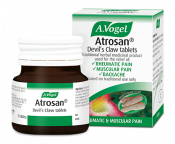What is glutamate?
Glutamate, also known as monosodium glutamate or MSG, is an excitatory neurotransmitter that is located in areas of the brain, spinal cord and periphery that are involved with pain sensation and transmission. Glutamate is a common flavour enhancer found in diets worldwide, and is also a naturally occurring chemical in foods like soy sauce and parmesan cheese, but is more commonly found as a food additive.
High levels of the substance can over-stimulate areas of the brain like the amygdala, disrupting its functions and potentially leading to an increase in chronic pain perceptions. While we do need pain as an important survival and protection mechanism, high levels of glutamate are thought to contribute to persistent chronic pain. That being said, glutamate is also important for brain development, learning and memory storage, and low levels have been linked to mood disorders such as depression.1
Can reducing glutamate consumption reduce my pain?
Neurotransmitters like glutamate have an especially strong impact on mood, behaviour and the perception of sensations such as pain. High levels of glutamate in the brain are thought to be linked to increased perception of pain and chronic pain syndromes such as fibromyalgia. Research from a small pilot study carried out in eastern Kenya supports this theory suggesting that there is a link between chronic pain and consumption of glutamate.
The study separated participants were into four groups;
1) Those who previously consumed glutamate in their diet were given a substitute mixed seasoning that contained no glutamate
2) Those who reported low water intake but no glutamate consumption were asked to drink at least 8 cups of water daily (because dehydration is associated with headache pain)
3) The third group were those who reported both low water consumption and glutamate consumption and so were given both water and substitute spices
4) The final group acted as a control so had neither substitute spices nor water exposure.
Results from this study demonstrated that when participants cut monosodium glutamate from their diets, their symptoms of chronic pain improved.2 What’s more, a 2006 study found that modulating glutamate levels could be beneficial in the treatment of various causes of chronic pain and inflammatory pain including back pain, diabetic neuropathy, rheumatoid arthritis and osteoarthritis.3
Foods containing glutamate to watch out for

Glutamine is found in both plant and animal protein and it is a non-essential amino acid meaning that we can also produce it in the body without consuming it through food sources. Pretty much every type of food that we eat will contain some amount of glutamate, but there are some foods that contain a higher content than others which is something to bear in mind if you’re looking to reduce your consumption.
High glutamate foods include:
• Parmesan cheese
• Soy Sauce
• Walnuts
• Packaged and processed foods
What else can I do for my muscle and joint pain?
When it comes to muscle and joint pain your diet can play a surprisingly big role in helping or hindering your pain, it’s always best to avoid inflammatory foods wherever possible. Why not check out our blog for 10 foods that can help you to fight inflammation?
In addition to diet, lifestyle changes can also be extremely beneficial in effectively managing and reducing your pain. Keeping active can help to keep the joints fluid and mobile which is beneficial in preventing stiffness and reduced range of motion.
Devil’s Claw is a fantastic herb traditionally used helping to ease muscular pain, backache and joint pain. Today Devil’s Claw’s remedies are still widely available and our founder Alfred Vogel advocated using this herb in a tincture format for swift absorption and quick actions throughout the body.
1 http://healthyeating.sfgate.com/glutamate-pain-8891.html
2 http://www.nutritionjrnl.com/article/S0899-9007(18)30040-6/fulltext
3 https://www.sciencedirect.com/science/article/pii/S1084952106001121?via%3Dihub









